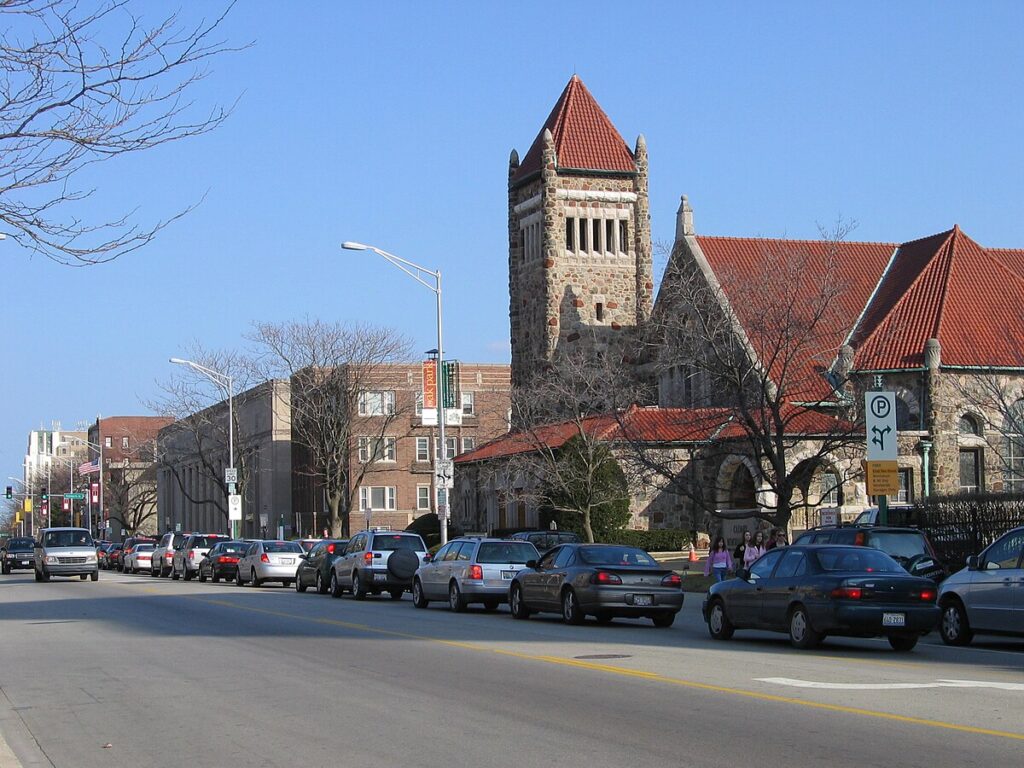
Moving to Oak Park, Illinois: A Comprehensive Relocation Guide
Considering moving to Oak Park, Illinois? This historic Near West village offers Frank Lloyd Wright architecture, progressive character, and urban energy. With approximately 54,000 residents in 2025, Oak Park combines architectural treasures with diversity and Chicagoland’s most distinctive suburb.
Demographic Profile to Consider If Moving to Oak Park:
Oak Park’s 2025 population is approximately 54,000 residents in this Cook County village immediately west of Chicago. The median age is around 40 years, with diverse families, professionals, artists, and progressive-minded residents. The population is approximately 63% White, 20% Black or African American, 9% Hispanic, 5% Asian. Oak Park features stunning Frank Lloyd Wright architecture with the highest concentration of his Prairie Style homes, diverse neighborhoods, historic downtown along Lake Street, and serves as a progressive urban suburb. The village attracts educated professionals, artists, diverse families, and those seeking progressive values with historic character. Oak Park appeals to liberal-leaning, culturally engaged residents valuing diversity, architecture, and urban lifestyle. The community emphasizes diversity, historic preservation, progressive values, and arts culture. Find trusted local services for moving, living, and working in Oak Park.Oak Park Relocation Directory
Cost of Living to Consider If Moving to Oak Park:
Oak Park offers high costs for Chicagoland suburbs. Median home values range from $420,000 to $700,000+ in 2025, with Frank Lloyd Wright homes and historic properties commanding premiums, reflecting the village’s architectural significance and location. The median household income is approximately $88,000. Rental properties average $1,500 to $2,500+ monthly. Illinois’ state income tax is flat 4.95%. Property taxes are very high (Cook County). Overall cost of living is high for the immediate Chicago proximity and architectural character. Oak Park attracts educated professionals and families willing to pay premiums for historic character and progressive community. Housing costs reflect the architectural significance and urban accessibility.
Economy and Job Market:
Oak Park residents typically work in Chicago (immediately adjacent) or throughout the metro. Many hold professional positions, work in arts/culture, education, or creative fields. Rush Oak Park Hospital provides healthcare employment. The village’s proximity to Chicago makes commuting simple. The broader Chicagoland economy offers vast opportunities. Typical commute times to Chicago via CTA are 15-25 minutes. The educated, progressive population includes many professionals in diverse fields including arts, education, healthcare, and professional services.
Education:
Oak Park Elementary School District 97 and Oak Park and River Forest High School District 200 serve village students with Oak Park and River Forest High School (shared with River Forest) offering comprehensive programs with strong arts and diverse student body. School quality is competitive with progressive educational approaches. The educational infrastructure reflects the community’s progressive values and diversity.
Recreation and Lifestyle:
Oak Park offers unparalleled Frank Lloyd Wright architectural heritage with Unity Temple, Frank Lloyd Wright Home and Studio, and the highest concentration of Prairie Style homes creating living museum atmosphere. The village features vibrant downtown along Lake Street with restaurants, shops, theaters, and walkable urban character. Residents enjoy the Ernest Hemingway Birthplace Museum (Hemingway was born in Oak Park), diverse dining, arts venues, and immediate Chicago access via CTA Green Line. The lifestyle emphasizes architecture appreciation, arts culture, diversity, progressive values, and urban lifestyle. The four-season climate enables year-round activities with walkability central. The community fiercely values diversity and integration (Oak Park pioneered fair housing), historic preservation, arts culture, progressive politics, and urban character. Living in Oak Park means very high costs, progressive political environment, accepting urban density and parking challenges, and prioritizing architecture and diversity while enjoying Frank Lloyd Wright treasures, immediate Chicago access, and vibrant progressive community creating Chicagoland’s most architecturally significant and politically progressive suburb where Prairie Style architecture meets diversity and progressive values define distinctive urban suburban living.
Healthcare and Services:
Oak Park residents access comprehensive healthcare through Rush Oak Park Hospital, West Suburban Medical Center, and immediate access to Chicago’s world-class medical facilities. The healthcare infrastructure is excellent given the urban location.
Transportation:
Oak Park benefits from CTA Green Line providing direct train service to Chicago Loop, Metra Union Pacific West Line, extensive CTA bus service, and Interstate 290 (Eisenhower Expressway). Many residents walk, bike, or use public transit. The village offers excellent walkability. Typical commute times to Chicago via CTA are 15-25 minutes.
Conclusion:
Moving to Oak Park in 2025 offers historic architectural living with Frank Lloyd Wright treasures, progressive character, and urban energy. The village’s combination of Prairie Style architecture, diversity, and immediate Chicago access makes it ideal for progressive professionals, architecture enthusiasts, and diverse families seeking Chicagoland’s most distinctive suburb where Frank Lloyd Wright defines beauty and progressive values meet architectural heritage in the ultimate historic urban suburb.

